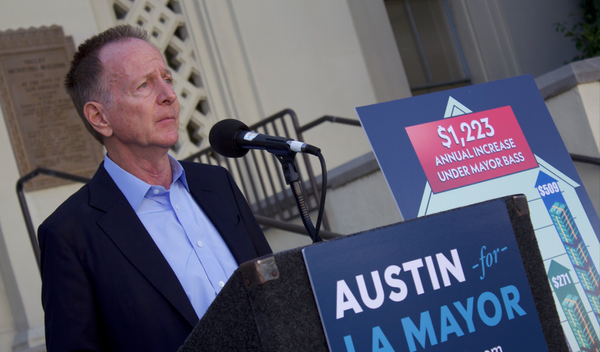
I hop on my bike just after 7:30 a.m. As I whiz by harried parents and kids with colorful backpacks heading to school, I’m warmed by the thought of the fresh apple fritter that awaits me at Somethin’ Sweet Donuts in Albany Park.
Fall, and more importantly, apple fritter season, has arrived.
Of course, at many Chicago doughnut shops, the latter never ends. Yet biting into one of these apple-laced confections somehow tastes sweetest on crisp autumn days.
I lean at the counter along the front windows of this cheery storefront, watching Kedzie Avenue rush by as I make quick work of Somethin’ Sweet’s decidedly light, tangy fritter laced with lush pockets of cinnamony apple.
The shop’s apple fritters begin like most, with soft yeasted dough that’s chopped and mixed with apple pieces before it’s formed into thick disks, proofed, fried, then blanketed in sugary glaze.
Owner Jim Chao “makes Somethin’ Sweet’s doughnuts every evening,” his son, Andrew Chao, told me. The bakery churns out up to a thousand yeast-raised and cake doughnuts a day.
An autumn delight for under $5
Sure, you could drive 40 minutes outside the city to a crowded orchard and pick some apples to commemorate the bounties of Midwestern fall. To me, this season’s delights are within reach of almost every Chicago neighborhood — not to mention most are under $5 — in the sweet, cinnamon-scented form of an apple fritter, pieced together by longtime proprietors who work their magic with yeast and fry oil.
The term fritter, meaning “fried batter cake” that’s served hot and sometimes sweetened or otherwise seasoned, first appeared around the 14th century, though earlier variations, such as the Old French term “friture,” meaning “fritter, pancake, something fried” and Late Latin “frictura,” or “a frying,” suggest that the technique originated two centuries earlier.
Cultures worldwide claim some variation on the fritter, whether they construct them using bits of seafood, vegetable or fruit, and make them savory or sweet. Documentation of the American tradition of apple fritters dates back to at least the 19th century.
Virginia housewife Mary Randolph included a recipe in her 1824 book, “The Virginia Housewife.” Her apple fritter recipe calls for soaking apple pieces in brandy, white wine, cinnamon, lemon peel and powdered sugar, then encasing them in a thin batter of melted butter, flour and water. They’re fried until golden then dusted with more powdered sugar.

My mind wanders to this decadent forebear as I nosh a gargantuan apple fritter at the River North outpost of minichain Firecakes. The fritter’s treacly flavor and rich mouthfeel owe to a brioche-like dough that’s mixed with cinnamon and sugar before joining chopped apples that have been previously cooked in butter and brown sugar, as Firecakes vice president of operations Michael Battocletti explained. My early-season fritter was made with Granny Smith apples from Washington, he added, “but we will switch to local when available.”
The fritters are scaled, shaped into thick pucks, proofed and fried, then glazed with Michigan apple cider glaze and dusted with powdered sugar for a sweet, pronounced apple flavor throughout. Indeed, Firecakes prioritizes local sourcing, meaning that come spring, you’ll see fresh rhubarb pieces in your fritter instead. So get them while you can, through the end of the year, to be exact.
If you snooze, you just might lose
Nothing beats sleeping in on a Saturday in fall. I give myself an extra half hour knowing I can shuffle over to my local Groundswell Coffee Roasters in Ravenswood, which supplies terrific apple fritters from Do-Rite Donuts until late into the morning (as do Do-Rite’s seven retail locations throughout the city and suburbs).
Comprising cinnamon-spiced dough pieced together with Michigan apple chunks, Do-Rite’s fritter gets extra spice from a slick of cinnamon-infused glaze — ideal for dabbing in searing-hot coffee.

However, late risers who roll into Old Fashioned Donuts in Roseland sometime after 10:30 a.m. may find the apple fritters have long since sold out. It’s easy to see why; 84-year-old proprietor Burritt Bulloch bakes just six or seven dozen every Saturday morning for fritter fans who flock here from all over the city and suburbs. Bulloch hand-forms them using yeasted dough scraps, then proofs and fries them to dark-golden brown before dousing them in glaze.
Fortunately, a quick, 15-minute drive up Cottage Grove Avenue deposits me at Dat Donut in Chatham, where the crisp-edged apple fritter is still warm when I pick it up. Like all of Dat Donut’s pastries, this isn’t a fritter I’d bag up for later. Rather, it’s one I inhale in one sitting.
“We make them throughout the day, matter of fact,” said co-owner Darryl Townson. “People eat them year-round, because we sell so many. But apple fritters always pick up in the fall.”
This almost 20-year-old shop is known for gargantuan doughnuts. Its apple fritters are thinner and crispier — made from yeast-raised dough that’s chopped together with sliced Granny Smith apples and blended with cinnamon and sugar. After proofing they’re patted out, fried and thickly glazed with vanilla icing.
I get back in the car, my fingers still sticky with glaze.







